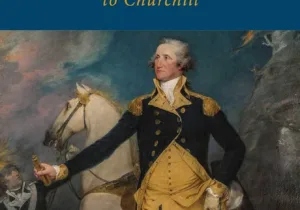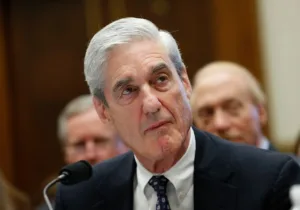The United States has now withdrawn from the Iran nuclear agreement and the Paris Climate Accords. The European Union is still sorting the effects of Brexit, and Eastern Europe is grappling with a rise in increasingly right-wing populist movements. Meanwhile, President Trump has imposed tariffs on long-time US allies and faces condemnation from the World Trade Organization (WTO), a body that America played a crucial role in creating to reduce trade barriers across the globe. South Sudan faces an impending famine as the US has distanced itself over the course of the young nation’s burgeoning civil war. Relations with Russia have deteriorated to a level not seen since the fall of the Soviet Union, and the two nations’ interests clash over Syria. Meanwhile, hundreds of thousands of Syrian refugees are still reeling from the ongoing war. As Richard Haass, president of the Council on Foreign Relations, puts it in his new book, the world is in disarray.
In A World in Disarray: American Foreign Policy and the Crisis of the World Order, Haass chronicles the history of world order, US foreign policy, and the new age that we find ourselves in. His book comes after a resurgence in scholarly interest on the subject of world order (Henry Kissinger’s 2014 book bears the title World Order).
Haass finished his manuscript in 2016 before the US presidential election’s outcome was certain. The first hardback edition was published in 2017 and reviewed for Providence by contributing editor Matt Gobush. This new paperback edition, published in January 2018, includes an afterword with Haass’ thoughts on the new administration’s foreign policy.
A World in Disarray prescribes a potential direction for US foreign policy in what Haass terms “sovereign obligation.”
Sovereign obligation is a concept of international order that expands upon state sovereignty to include state obligations to other countries in the context of our increasingly globalized world. The presentation of the solution is a bit muddled since Haass strives at length to distinguish sovereignty as obligation from sovereignty as responsibility and the doctrine of the responsibility to protect (R2P).
Where (R2P) requires a reduction in state sovereignty rights, sovereign obligation seeks to expand how states and international coalitions see their commitment to other countries and, by extension, their citizens. Where responsibility is a neater doctrine, sovereign obligation is less a philosophy and is more a realist strategy for molding how states act in relation to themselves and the world. Haass writes, “Sovereign obligation is realism updated and adapted to meet the exigencies of a global era.” It’s not a specific plan so much as it is a call for countries and in particular the US to begin building consensus around a more robust account of state sovereignty fit for today’s challenges.
Given the foreign policy decisions of the last year, Haass is less than certain whether the current administration is up to the task of revisioning world order.
In the new afterword, Haass concludes that the US has abdicated its leadership in the world over the past year and a half. He explains, “The United States is no longer taking the lead in maintaining alliances or in building regional and global institutions. It is abdication from what has been a position of leadership in developing the rules and arrangements at the heart of any world order.”
No doubt if he had waited till this month to finish the afterword, he would point to the President’s tariffs on European, Mexican, and Canadian goods as case in point. With the recent escalation of trade restrictions, the US finds itself positioned against the World Trade Organization, the G7, and historic allies in North America and Europe.
This abdication of American leadership goes beyond a few protectionist policy decisions. Haass argues that the president’s entire “America First” doctrine has recast much of the foreign policy of the past as contrary to American interests.
He puts it frankly:
Trump is the first post-World War II American president to view the burdens of world leadership as outweighing the benefits. As a result, the United States has changed from the principal preserver of order to a principal disrupter. The Trump administration’s approach to foreign policy is hardly the only cause of increased disarray in the world, but it is a significant one and surely the most unexpected.
Haass provides an excellent telling of the history of world order from the Peace of Westphalia all the way up to the fall of the Berlin Wall and into the twenty-first century. He accounts for the full scope of key factors and events in the history of world order, including diplomacy, balance of power, legitimacy, state actors, and non-state actors.
The merits of Haass’ sovereign obligation are less clear. While he does his best to cast the theory as a pragmatic way for the US and the rest of the globe to move toward a better world order, his application of the theory seems at times to be simply the author’s thoughts on the best foreign policy for a region or issue and less part of a broader framework of order.
Regardless, what Haass makes clear is the unique role of the US in the international sphere. Whether world order should center on countries’ responsibilities to their own citizens or sovereign obligation, resigning ourselves to a view of the world as simply a Hobbesian arena for competing interests will lead to less order.
—
Grayson Logue is a senior at the King’s College in New York City, pursuing a degree in Politics, Philosophy, and Economics.
Photo Credit: Richard Haass in March 2016. By Christopher Michel, via Flickr.







 Sponsor a student for Christianity & National Security 2024
Sponsor a student for Christianity & National Security 2024